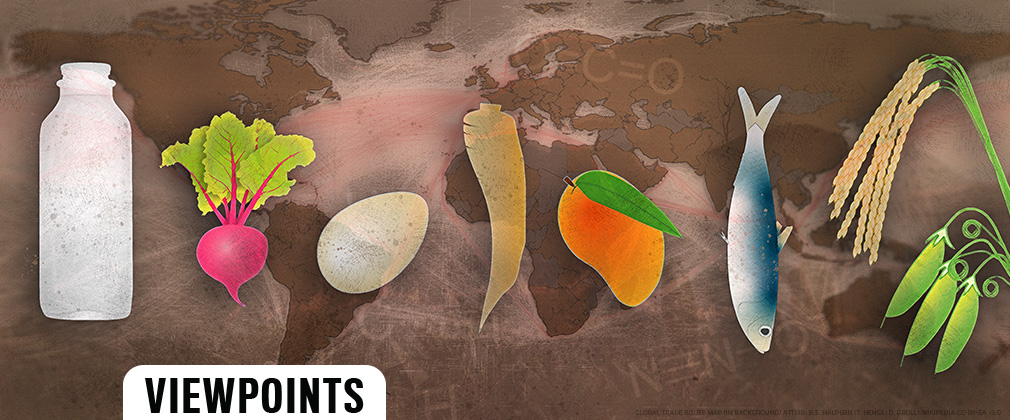For Climate Crisis and Malnutrition, Look at Diet Choice in Context
There has been a lot of attention recently on the fact that emissions from agriculture and food production account for a significant proportion of the global total and must fall if we want to meet the UN climate goal of no more than 1.5 degrees warming. This attention and awareness are welcome, as is the willingness at an individual level in some countries to reduce meat and dairy consumption to help save the planet. For example, a third of consumers in the UK have reportedly either reduced or eliminated meat from their diet, while around half of the Dutch population call themselves “flexitarians.”
However, we need to be careful about oversimplifying things or prescribing a “one-size-fits-all”, western-centric, solution to the challenges of diet and climate. For any diet-related climate change solution to be sustainable, it must also address the problems of under nutrition, obesity, poverty, and economic development. It is critical to recognize that different countries have different priorities and are at different stages of development—meaning there are different imperatives for these countries and their populations.
In many low-and-middle-income countries, the imperative is to ensure people have adequate nutrition. Today, more than 820 million people around the world don’t have enough to eat, a number that has risen in recent years (in part due to climate change, as well as conflict). Meanwhile, more than a third of all children under five in low-income countries such as India and Malawi are stunted. This means their physical and mental development are impaired because of poor nutrition, with consequences that stretch far into adulthood. Indeed, as the World Bank highlighted last year, poor nutrition directly affects countries’ development prospects, not least as a result of the diminished capabilities of working populations, known as “human capital.”
Of course, poor countries also need to consider the growing and increasingly urgent threat of climate change, and set policies—including food-related ones—that address it. But a top down diktat that recommends a plant-based diet without taking into account the nutritional needs of vulnerable populations or the availability of certain foodstuffs is neither helpful nor appropriate. The fact is that in low-income countries, some people, especially young children, will need to eat more animal products, particularly dairy and eggs, to get adequate protein, vitamins, and minerals. Consequently the diet-related emissions and use of freshwater in these places will have to rise. This means that in high-income countries, where people generally have enough to eat (although are not necessarily healthy) the shift towards more plant-forward diets and away from carbon- and water-intensive consumption patterns has to happen faster.
And yet, even in high-income countries, a “one-size-fits all” approach is not necessary. In our new report, we modeled the climate and freshwater impact of the ‘typical’ diet in 140 countries, and compared it to a ‘healthy baseline’ diet and nine ‘plant-forward’ diets, including vegan, vegetarian, and a meat-free day. A perhaps surprising finding was that a diet where the animal protein comes predominantly from low down the food chain, such as small fish and mollusks, has as low an environmental impact as a vegan diet, but generally has more easily digestible micronutrients and proteins. Similarly, eating animal products only once a day (being a “2/3 vegan”) is in most cases, less carbon intensive than following a traditional vegetarian diet involving dairy. By looking at diet choice in context, and including factors like the impact of trade, our aim is to enable governments and individuals to make decisions that balance health and nutrition needs, cultural preferences, and environmental impact.
We are dealing here with what I call “wicked problems.” The solutions are not uniform and will inevitably involve trade-offs. We have to stop looking at things in silos, and shouting from the rooftops about our competing priorities, and instead have a mature, informed debate about what coordinated global action to address multiple challenges looks like. Nutrition and climate change are the subject of just two of the 17 UN Sustainable Development Goals, which address the full spectrum of development challenges the world faces, and are laudable in their efforts to guide a holistic, systems approach to global health and prosperity. Success in attaining these goals by 2030 will entail recognition of and action to address and reconcile trade-offs, clashes, and compromises.
There is, sadly, no silver bullet, but our research gives policymakers a tool to address health, economic, and environmental challenges as they manifest in their countries, for example, by setting national dietary guidelines that support efforts to tackle malnutrition, while also charting a sustainable course in terms of emissions and freshwater use. It is this sort of context-specific, data-driven approach that will enable pragmatic and effective action to solve humanity’s most urgent problems.
Martin W. Bloem, MD, PhD, is the inaugural Robert S. Lawrence Professor and director of the Johns Hopkins Center for a Livable Future (CLF) in the Department of Environmental Health and Engineering at the Johns Hopkins Bloomberg School of Public Health.
